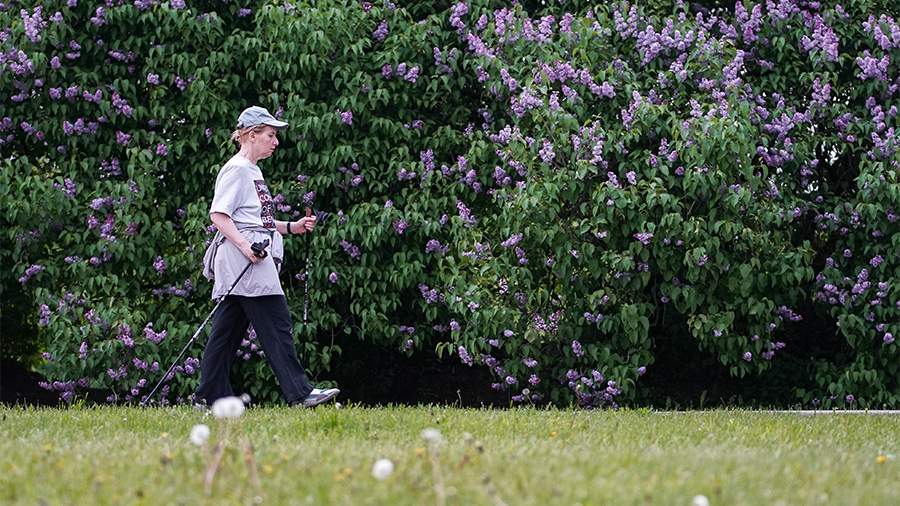The doctor told about the peculiarities of Nordic walking

Nordic walking is a type of physical activity that combines elements of regular walking with the use of special sticks. Anastasia Agayeva, a general practitioner at the Sberbank Health medical company, told Izvestia on May 24 about the benefits of Nordic walking, the correct technique for doing it, and what you need to know before starting classes.
"This type of activity is suitable for people of any age, gender, and fitness level. It helps to use about 90% of the body's muscles, since not only the lower, but also the upper part of the body is involved in the work. This, in turn, makes training as effective as possible to maintain health," she said.
Such walking helps to improve the functioning of the cardiovascular system, strengthen muscles and joints, as well as immunity. In addition, Nordic walking improves coordination, endurance, and helps reduce stress levels. It is worth noting that it helps to burn more calories compared to regular walking.
The main contraindications for which Nordic walking cannot be practiced include the presence of acute inflammatory diseases, for example, exacerbation of arthritis — joint inflammation; cardiovascular diseases, including recent myocardial infarction and severe hypertension; pathologies of the musculoskeletal system, for example, bone fractures or severe osteoporosis, a disease in which bone density decreases. tissues; disorders of coordination and balance. Also, Nordic walking should not be practiced in the presence of neurological diseases accompanied by weakness or impaired sensitivity in the extremities, for example, with Parkinson's disease, and in some cases during pregnancy — on the recommendation of a doctor.
Before starting training, it is important to choose the right sports uniform. It is worth giving preference to clothes made of "breathable" fabrics, for example, cotton in the summer. Shoes should be light, with reliable cushioning and fixation of the foot — sneakers or special sports shoes are suitable for this.
For Nordic walking, it is necessary to choose sticks with the possibility of length adjustment — for training, it should be about 70-90% of a person's height. The stick strap retainer should hold the hand securely, but not restrict movement. The tip of the stick, in turn, must have good grip on different types of surfaces, such as grass or asphalt.
Before starting a workout, you need to do a light basic warm-up to prepare your muscles and joints for activity. For example, you can make circular rotations with your shoulders, torso and legs, as well as alternately pull one and the other leg up by the knee to your chest. Training should start at a slow pace, gradually increasing the speed. At the same time, you should maintain a comfortable walking pace that does not lead to shortness of breath.
"Your back should be kept straight, your shoulders should be relaxed and lowered, and your gaze should be forward. The sticks should be held away from you at an angle of about 45 degrees to the ground. The arms should move in rhythm with the legs: when one leg is in front, the opposite arm should be in front with a stick," the doctor explained.
She added that when walking, it is recommended to take medium—length steps - with each step, gently land on the heel, then roll onto the toe. During training, you should breathe evenly and deeply — inhale through your nose and exhale through your mouth. At the same time, you should try to synchronize your breathing with the rhythm of walking.
At the end of the training, according to Agayeva, a hitch should be held. To do this, you need to gradually reduce your walking speed for 5-10 minutes. Then you need to do muscle stretching exercises, such as slow, smooth lunges. This, in turn, helps to reduce the risk of muscle soreness.
Earlier, on April 24, Galina Smirnova, an endocrinologist at the Scandinavian Health Center, told Izvestia that those who experience drowsiness and low mood in the spring will benefit from gentle physical activity and light nutrition with sufficient vitamins. According to her, urban residents are particularly susceptible to spring asthenia.
Переведено сервисом «Яндекс Переводчик»

